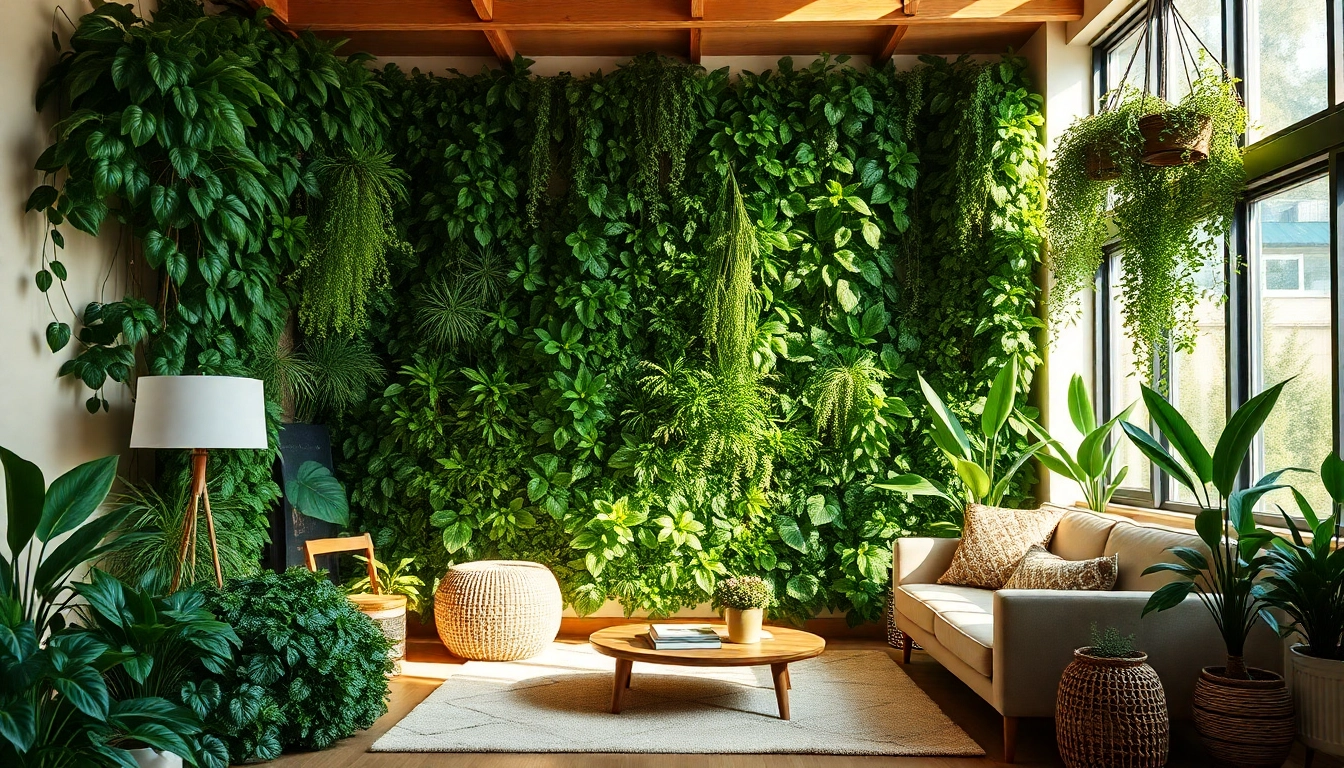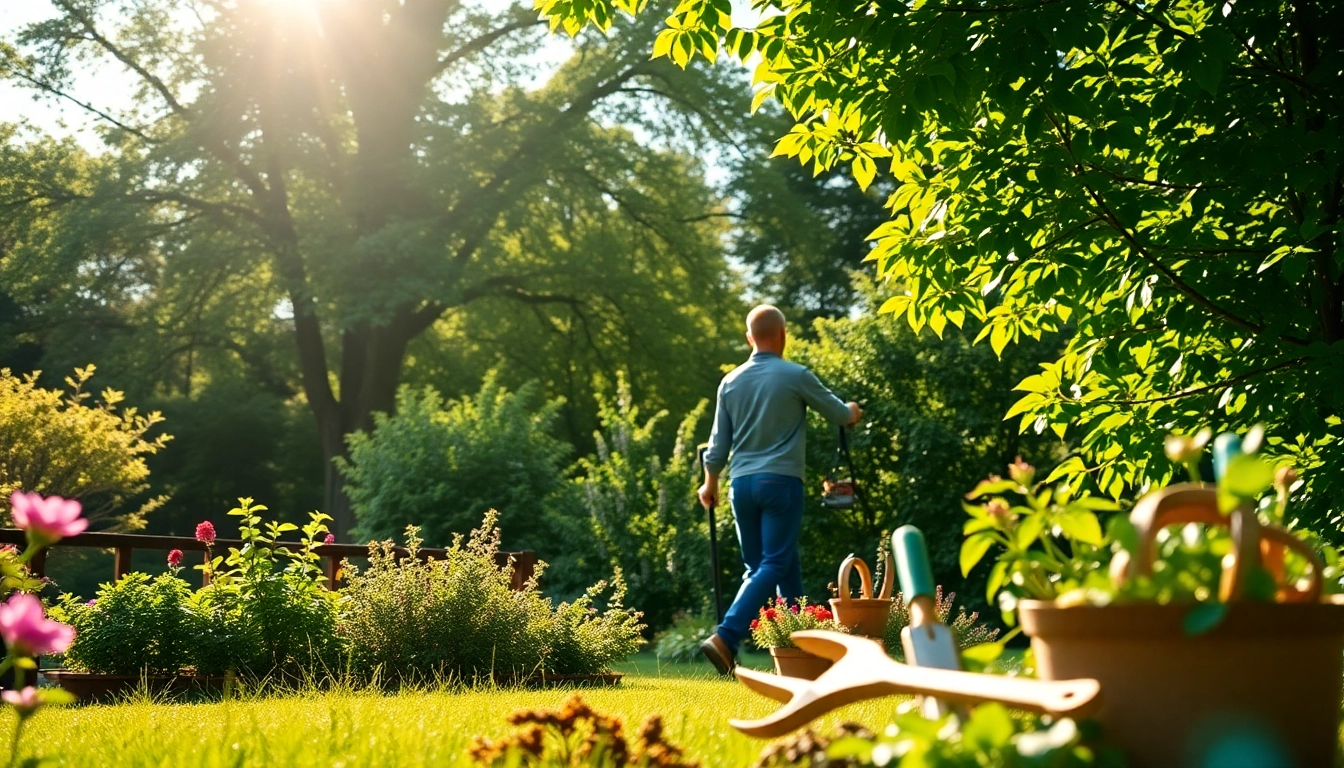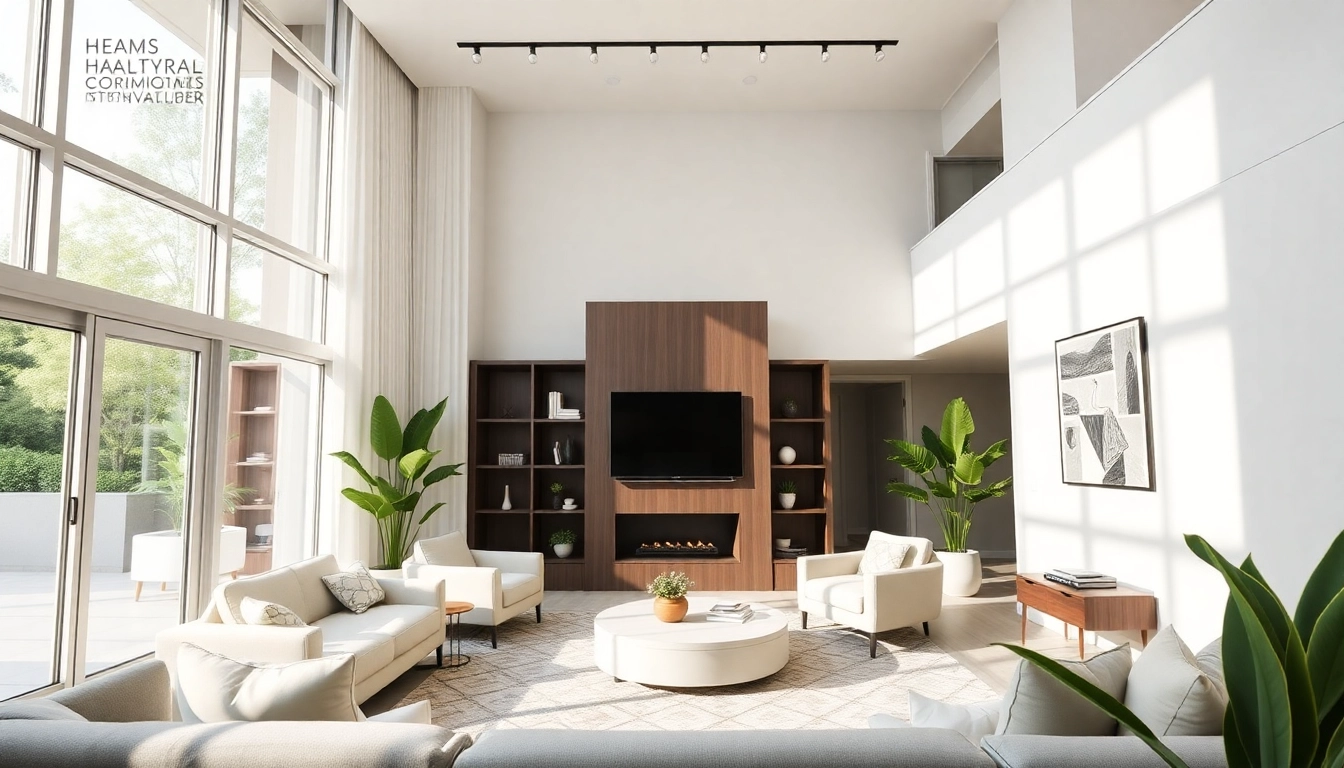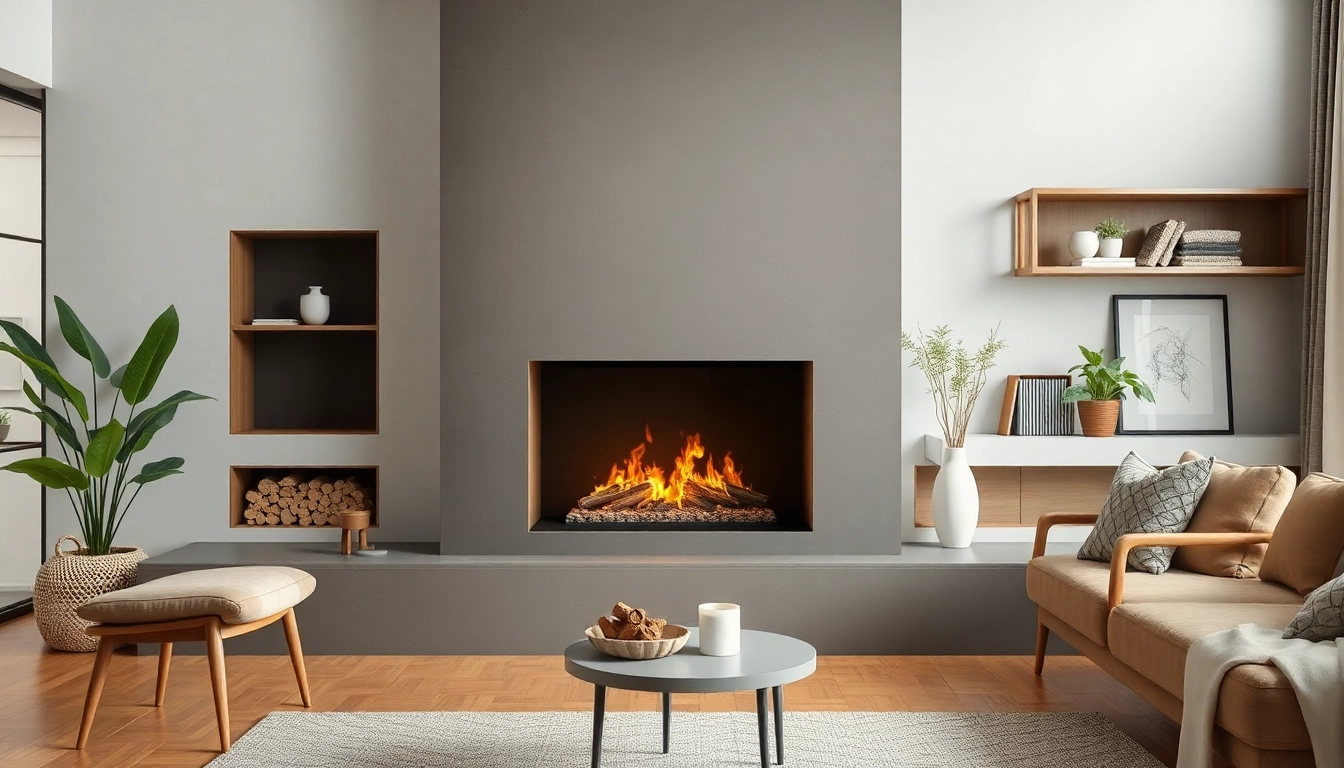Understanding Wandbegrünung Indoor
What is Wandbegrünung Indoor?
Wandbegrünung Indoor, or indoor vertical greening, refers to the practice of creating living walls in indoor environments. These green walls consist of various plant species integrated into a support system, which can be mounted on walls, providing a natural touch to otherwise sterile indoor spaces. This innovative design trend is not only aesthetically pleasing but also brings numerous benefits to both the environment and the inhabitants of the space.
The versatility of indoor green walls allows them to be implemented in a range of settings, from residential homes to corporate offices, creating biophilic designs that enhance the well-being of individuals. Embracing Wandbegrünung Indoor can transform even the most mundane interiors into vibrant living ecosystems.
Benefits of Indoor Greening
The advantages of incorporating indoor greenery go beyond simple decoration. Here are some key benefits:
- Improved Air Quality: Plants are natural air filters, absorbing pollutants and releasing oxygen, significantly improving indoor air quality.
- Stress Reduction: Studies indicate that interacting with greenery can reduce stress levels, improve mood, and increase overall life satisfaction.
- Acoustic Benefits: Green walls can also help in reducing noise pollution by absorbing sound, thus creating a more peaceful indoor environment.
- Energy Efficiency: Indoor plants can help regulate humidity and temperature, potentially reducing energy costs for heating and cooling.
- Aesthetic Appeal: A well-designed indoor green wall can serve as a stunning focal point that enhances the beauty of any space.
Choosing the Right Plants
Selecting appropriate plants is crucial for the success of your indoor green wall. Consider the following factors:
- Light Conditions: Identify the amount of natural light available in the space. Low-light plants, such as ferns, snake plants, and pothos, thrive in dim conditions, while succulents and herbs prefer brighter environments.
- Humidity Levels: Certain plants, like peace lilies and tropical species, require higher humidity levels, which may be achievable with a proper irrigation system.
- Growth Patterns: Choose plants with various growth habits to create a visually appealing and dynamic wall. Mixing trailing, upright, and bushy plants can provide texture and form.
- Care Requirements: Ensure that the plants selected align with your capacity for maintenance. Some plants need regular trimming, while others are more forgiving.
Designing Your Indoor Green Wall
Layout Options for Wandbegrünung
The layout of your indoor green wall will significantly influence its impact. Here are some popular design concepts:
- Grid Layout: This symmetrical arrangement allows for an organized appearance, typically best for larger spaces.
- Asymmetrical Design: An eclectic approach creates visual interest, ideal for modern interiors seeking artistic flair.
- Textured Patterns: Mixing plants of varying leaf shapes, sizes, and colors can enhance the sensory experience.
- Framed Wall Art: Incorporate individual framed sections of plants for a more structured look that can reflect the homeowner’s personality.
Essential Materials and Tools
Creating a successful indoor green wall requires a range of materials and tools:
- Wall Frame: A durable, waterproof frame that supports the plant containers and any irrigation systems is essential.
- Growing Medium: A lightweight soil mix or hydroponic system to provide nutrients and support plant health.
- Irrigation System: A drip irrigation system is highly recommended for consistent moisture and convenience.
- Plant Containers: Choose containers that allow for proper drainage and root development.
Common Design Mistakes to Avoid
Even with the best intentions, common pitfalls can derail an indoor green wall project. Here are some mistakes to watch out for:
- Poor Plant Selection: Choosing plants that don’t thrive in the given environment can lead to quick failure.
- Lack of Watering Considerations: Failing to plan for consistent and adequate watering can harm plant health.
- Too Many Plants: Overcrowding can hinder growth and lead to competition for resources.
- Neglecting Maintenance: Plants require care; neglect can lead to eventual failure of the indoor greenery.
Maintenance Tips for Indoor Greenery
Watering and Nutrients
Regular watering is crucial for maintaining a healthy indoor green wall. Here are guidelines to follow:
- Frequency: Watering schedules should be adjusted according to plant species, light levels, and humidity. Some will require watering once a week, while others may need more frequent moisture.
- Water Quality: Use clean, chemical-free water, as chlorine and other chemicals can harm plant growth.
- Nutrients: Add organic fertilizers every few months, adjusting according to the plant’s needs and growth stage.
Lighting Requirements
Light is fundamental to plant health. Here’s how to ensure your indoor greenery gets the right amount:
- Natural Light: Position your green wall where it will receive adequate natural light or consider supplemental grow lights to fulfil plant needs.
- Light Duration: Most indoor plants need at least 10-12 hours of light. Timers can ensure a consistent light schedule.
- Light Quality: Choosing full-spectrum bulbs can help mimic natural sunlight, promoting healthy growth.
Pest Control Strategies
Monitoring for and managing pest problems is vital to maintaining a thriving indoor green wall. Strategies include:
- Regular Inspections: Check plants for any signs of infestation, such as discoloration, webs, or trails.
- Natural Pest Control: Introduce beneficial insects, such as ladybugs, for aphid management or use homemade solutions like insecticidal soap.
- Isolation: New plants should be quarantined before being added to existing walls to prevent potential infestations.
Real-Life Inspirations for Wandbegrünung Indoor
Case Studies of Successful Indoor Walls
Examining successful implementations of indoor green walls can provide practical insights. Here are notable case studies:
- Corporate Offices: A leading tech company transformed its office by installing a living wall that boasts over 200 plants, reducing workplace anxiety and fostering creativity among employees.
- Restaurants: A high-end restaurant integrated their green wall as part of the dining experience, enhancing the aesthetic appeal and providing a fresher atmosphere.
- Public Spaces: Community centers have installed vertical gardens to protest community commitment to sustainability, also improving air quality and visitor satisfaction.
DIY Approaches for Homeowners
Homeowners considering a DIY approach to their indoor green wall can follow these steps:
- Research: Identify the types of plants suited to your space.
- Gather Materials: Acquire necessary materials, including the frame, containers, and irrigation systems.
- Design Planning: Sketch your layout before installation to visualize plant placement and arrangement.
- Installation: Follow a step-by-step process for mounting and planting, ensuring you respect each species’ light and water requirements.
Professional Installations: When to Consider?
While DIY can be rewarding, professional installation may be warranted in certain scenarios:
- Complex Designs: For intricate layouts or large-scale walls, hiring a professional can ensure a seamless result.
- Maintenance Concerns: If you lack the time or knowledge for ongoing care, professionals can provide maintenance packages.
- Custom Solutions: For tailored designs that integrate with specific architecture or aesthetics, expert guidance can offer valuable insights.
Measuring the Impact of Indoor Planting
Benefits to Mental Health and Well-being
Indoor planting has profound effects on mental health. Research shows that:
- Increased Focus: Exposure to green spaces can enhance concentration and productivity in work or home settings.
- Reduced Anxiety: The presence of plants has been linked to lowered cortisol levels, combating stress effectively.
- Enhanced Creativity: Environments enriched with nature enable more innovative thinking and problem-solving capabilities.
Air Quality Improvements
One of the most well-documented benefits of indoor greenery is its impact on air quality. Research indicates that:
- Pollutant Removal: Plants can eliminate various toxins from the air, such as formaldehyde and benzene.
- Humidity Control: The transpiration process of plants contributes to higher humidity levels, which can be beneficial in dry indoor settings.
- Odor Elimination: A diverse array of plants help neutralize unpleasant odors, enhancing overall air freshness.
Performance Metrics for Indoor Greenery
To understand the effectiveness of your indoor green wall, consider tracking various performance metrics:
- Plant Growth: Monitoring growth rates can indicate the success of your green wall setup.
- Air Quality Measurements: Employ air quality monitors to assess changes in pollution levels and overall air purity.
- User Feedback: Gathering opinions from occupants regarding their mental and physical well-being can highlight the positive impact of the green wall.



